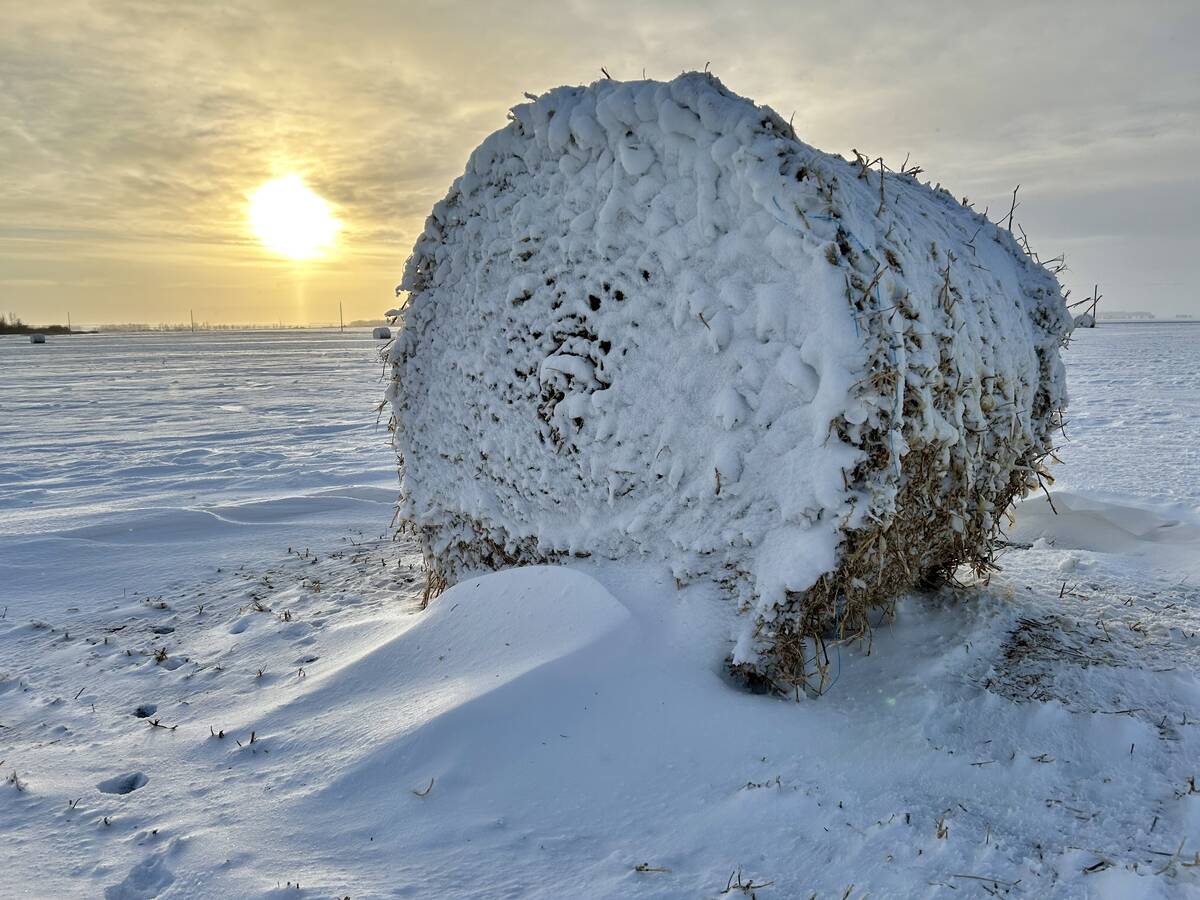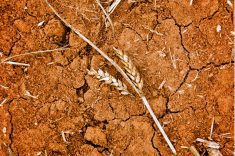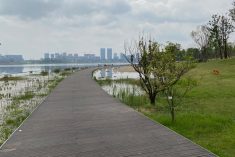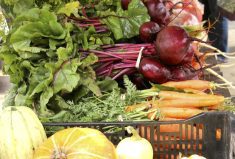Drop by precious drop we are celebrating rain in the dry areas — and cursing it on the flood plains.
The weather patterns have been rather unpredictable with monumental hail in Mexico City to extreme heat in Europe and Saharan winds that are dropping sand in the most remote of locations. Putting seed in the ground this year on the Canadian Prairies was either in mud or a dust bowl, while across Canada to the east we see the severe summer storm warnings already in play. And the Rocky Mountain snowpack has yet to come down.
Read Also

Prairie winter snowfall forecast 2025-2026
How much snow should farmers in Alberta and elsewhere on the Canadian Prairies expect for the rest of December 2025 and into January-February 2026?
It is frustrating for farmers, but fresh water is a gift and rather a rarity in the world. With only one per cent of the Earth’s surface in fresh water, soggy fields are a blessing many will never know.
Why is the world so dry?
Much of the freshwater reserves globally were disturbed by mankind through deforestation, resource development, industry, residential expansion, conflict and the planting of monocultures. Any balanced ecology is water producing — even the desert. The balance between animals, humans and plants has existed and the damaging chemical washes we now use, in the production of silver for example, did not previously exist at commercial levels.
Population growth and intensity around food-production areas also had a huge impact and propelled monocultures to provide food, spurred industry to provide fuel and supported other resource development often at the cost of fresh water. Using fresh water for fracking is an example of pulling water from the aquifers. But action above ground is where the land became exposed from any source of development, warmed the soil and threatened the valuable system of retaining water as precious canopy and roots were removed.
Conflict plays a huge role in water availability worldwide as land is contaminated and areas are burned or cleared so opposing forces cannot hide. Add to this the air pollution, chemical run-off from weaponry and from the lack of facilities for human waste, and the result is the destruction of all living things and the critical infrastructure that supports a water system.
From an agricultural perspective, I like to use the example of the Beqaa Valley, a 120-kilometre strip that represents 40 per cent of the arable land in Lebanon. The rich soil was built in ancient times by rotational grazing and semi-nomadic farming. Conflict and the accompanying monoculture of hashish, opium and grapes have changed the land to a very arid area now dependent on irrigation. An unintended consequence is that the valley is also devoid of rural population because of the uncertain accessibility to water.
In many areas of the world where there is a water shortage, such as the western U.S. and in the Middle East, sea water is scrubbed to make fresh water. This scrubbed water supplies whole cities, such as in San Diego County where the desalination plant produces 50 million gallons of drinking water per day. In the desert of Qatar, large pipelines transport scrubbed water to grow feed and food.
This is a concept that may seem foreign to Canadians but the solutions for future water shortages near shorelines lie within our borders. Canada has the longest coastline in the world. We have yet to fully embrace the potential of this geographical wonder in the production of food, feed, salt and scrubbed water.
Our water and our waterways are unique. Of the 52,445 islands in Canada, the 30,000 that are inhabited need consistent food delivery and freshwater supplies. The old saying “surrounded by water and not a drop to drink” (from Samuel Taylor Coleridge’s famous poem, “The Rime of the Ancient Mariner”) haunts many societies globally as it does here at home. Freshwater challenges are in land and at sea.
Being home to one-fifth of the world’s freshwater supply does not mitigate the risk of freshwater shortages to communities, nor does it assume that climate events will not happen here.
Water is found in Canada but the ecology in which it is naturally produced is disturbed as nearly 80 per cent of our population is urban, and that intensity has a profound effect on watersheds as communities live near the food and the sea. We have extensive resource development. These activities not only require a lot of water but also divert and displace natural watersheds. The rivers within our borders discharge nearly seven per cent of the global renewable water supply. Protecting our rivers is critical to ocean health.
We may not have warfare within our borders but we do have communities without fresh water. And though we are water abundant, we have yet to fully appreciate this valuable resource and to mitigate future risk with both an ecological framework and an intense investment in water technology.
Even with one-fifth of the world’s fresh water, we are not immune to climate events and need to retain and create fresh water — drop by precious drop.
















